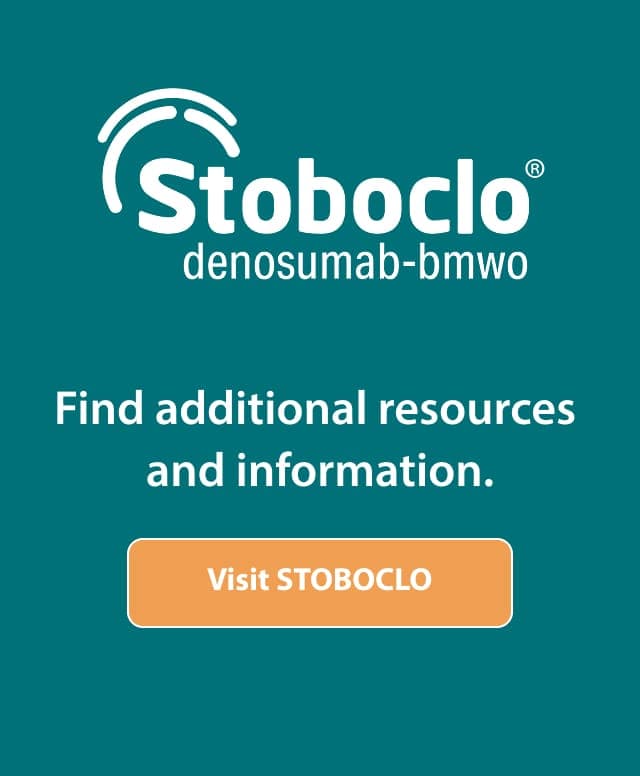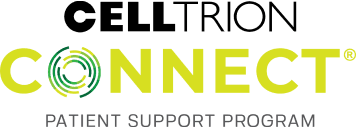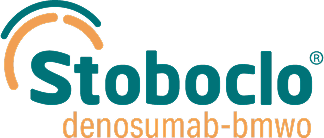Download this guide for helpful information on billing and coding for STOBOCLO.
FORMS & RESOURCES for healthcare providers prescribing STOBOCLO®
These resources are designed to help you navigate the insurance process and get your patients started on STOBOCLO with confidence

Celltrion provides dedicated Field Reimbursement Managers (FRMs) who may be able to support your office.
Call the Celltrion CONNECT® Patient Support Program to find out more: 1-877-81CONNC (1-877-812-6662), Monday – Friday between 8 AM – 8 PM ET.
Office Resources
 Billing and Coding Guide
Billing and Coding Guide HCP Patient Support Program Brochure
HCP Patient Support Program BrochureDownload this brochure to learn about the Celltrion CONNECT Patient Support Program for STOBOCLO, including how to enroll, assistance with insurance verification, and determining financial assistance.
 Sample Letter of Appeal
Sample Letter of AppealDownload this templated letter to assist you with writing a letter of appeal for STOBOCLO after a claim has been denied.
 Sample Letter of Medical Exception
Sample Letter of Medical ExceptionDownload this templated letter to help explain the rationale behind your clinical decision to prescribe STOBOCLO.
Enrollment Forms
 Celltrion CONNECT Enrollment Form
Celltrion CONNECT Enrollment FormDownload this form to enroll your patient in the Celltrion CONNECT Patient Support Program.
 Patient Assistance Program Application
Patient Assistance Program ApplicationDownload this application for the Celltrion CONNECT Patient Assistance Program.
Patient Resources
 Patient Walk Away Tear Pad
Patient Walk Away Tear PadDownload this flashcard to provide to patients leaving your office after they have been prescribed STOBOCLO and enrolled in Celltrion CONNECT. Patients must follow these steps and provide their consent in order to complete the enrollment process.

Indications and Important Safety Information
IMPORTANT SAFETY INFORMATION
WARNING: SEVERE HYPOCALCEMIA IN PATIENTS WITH ADVANCED KIDNEY DISEASE
Patients with advanced chronic kidney disease (eGFR < 30 mL/min/1.73 m2), including dialysis-dependent patients, are at greater risk of severe hypocalcemia following denosumab product administration. Severe hypocalcemia resulting in hospitalization, life-threatening events and fatal cases have been reported.
The presence of chronic kidney disease–mineral bone disorder (CKD-MBD) markedly increases the risk of hypocalcemia in these patients.
Prior to initiating STOBOCLO in patients with advanced chronic kidney disease, evaluate for the presence of CKD-MBD. Treatment with STOBOCLO in these patients should be supervised by a healthcare provider with expertise in the diagnosis and management of CKD-MBD.
Contraindications
- Hypocalcemia: Pre-existing hypocalcemia must be corrected before initiating therapy.
- Pregnancy: Denosumab products may cause fetal harm when administered to a pregnant woman.
- Hypersensitivity: Known hypersensitivity to denosumab products.
Severe Hypocalcemia and Mineral Metabolism Changes. Severe hypocalcemia can occur. Ensure adequate calcium and vitamin D supplementation.
Drug Products with Same Active Ingredient. Patients receiving STOBOCLO should not receive other denosumab products concomitantly.
Hypersensitivity. Clinically significant hypersensitivity including anaphylaxis has been reported with denosumab products. If an anaphylactic or other clinically significant allergic reaction occurs, initiate appropriate therapy and discontinue further use of STOBOCLO.
Osteonecrosis of the Jaw (ONJ). ONJ can occur in patients on STOBOCLO, particularly after tooth extraction and/or local infection with delayed healing. A routine oral exam is recommended before starting STOBOCLO, with a dental evaluation and preventive care for high-risk patients. Good oral hygiene should be maintained, and ONJ-risk drugs may heighten ONJ likelihood, especially with extended STOBOCLO exposure. For invasive dental procedures, individualize treatment based on clinical judgment. If ONJ develops, consult a dentist or oral surgeon, as extensive surgery may worsen ONJ; consider discontinuing STOBOCLO based on benefit-risk assessment.
Atypical Subtrochanteric and Diaphyseal Femoral Fractures. Atypical low energy or low trauma fractures of the shaft have been reported in patients receiving denosumab products. During STOBOCLO treatment, patients should be advised to report new or unusual thigh, hip, or groin pain. Patients with thigh or groin pain should be evaluated for an atypical femur fracture, including assessment for potential fractures in the contralateral limb. Interruption of STOBOCLO therapy should be considered, pending a benefit-risk assessment, on an individual basis.
Multiple Vertebral Fractures (MVF) Following Discontinuation of Treatment. Following discontinuation of denosumab treatment, fracture risk increases, including the risk of multiple vertebral fractures. Prior vertebral fracture was a predictor of multiple vertebral fractures after denosumab discontinuation. Evaluate an individual’s benefit-risk before initiating treatment with STOBOCLO. If STOBOCLO treatment is discontinued, patients should be transitioned to an alternative antiresorptive therapy.
Serious Infections. In a trial of women with postmenopausal osteoporosis, serious infections were more frequent with denosumab than placebo, including skin, abdominal, urinary, ear infections, and endocarditis. Overall infection rates were similar between groups. Advise patients to seek medical attention for severe infection symptoms like cellulitis. Those on immunosuppressants or with weakened immune systems may face higher risks. Assess the benefit-risk profile before starting STOBOCLO, and reconsider its use if serious infections develop.
Dermatologic Adverse Reactions. Epidermal and dermal adverse events such as dermatitis, eczema, and rashes have been reported in patients treated with denosumab. Consider discontinuing STOBOCLO if severe symptoms develop.
Musculoskeletal Pain. In postmarketing experience, severe and occasionally incapacitating bone, joint, and/or muscle pain has been reported in patients taking denosumab products. Consider discontinuing use if severe symptoms develop.
Suppression of Bone Turnover. In clinical trials in women with postmenopausal osteoporosis, denosumab significantly suppressed bone remodeling, with unknown long-term effects that may lead to osteonecrosis of the jaw, atypical fractures, or delayed fracture healing; patients should be monitored for these outcomes.
Hypercalcemia in Pediatric Patients with Osteogenesis Imperfecta. STOBOCLO is not indicated for use in pediatric patients. Hypercalcemia has been reported in pediatric patients with osteogenesis imperfecta treated with denosumab products. Some cases required hospitalization.
Adverse Reactions
- Postmenopausal osteoporosis: Most common adverse reactions (> 5%) were: back pain, pain in extremity, hypercholesterolemia, musculoskeletal pain, and cystitis. Pancreatitis has been reported in clinical trials.
- Male osteoporosis: Most common adverse reactions (> 5%) were: back pain, arthralgia, and nasopharyngitis.
- Glucocorticoid-induced osteoporosis: Most common adverse reactions (> 3%) were: back pain, hypertension, bronchitis, and headache.
- Bone loss due to hormone ablation for cancer: Most common adverse reactions (≥ 10%) were: arthralgia and back pain. Pain in extremity and musculoskeletal pain have also been reported in clinical trials.

